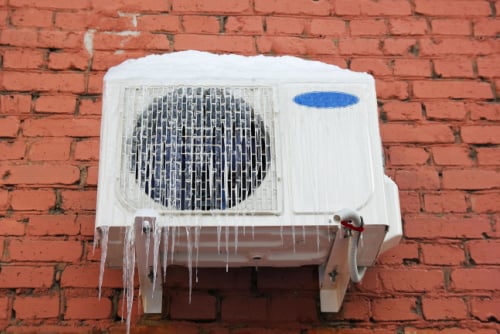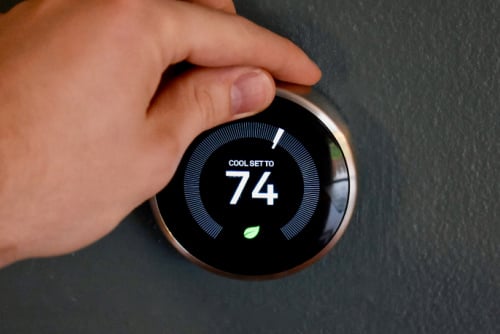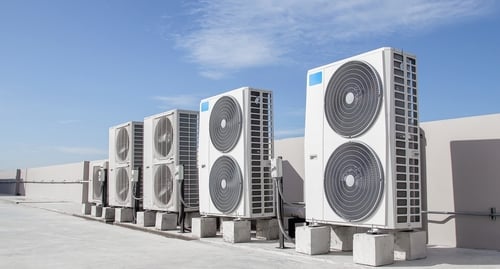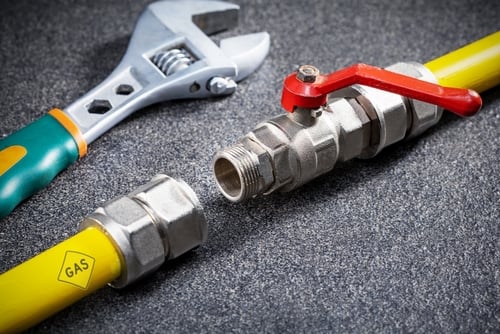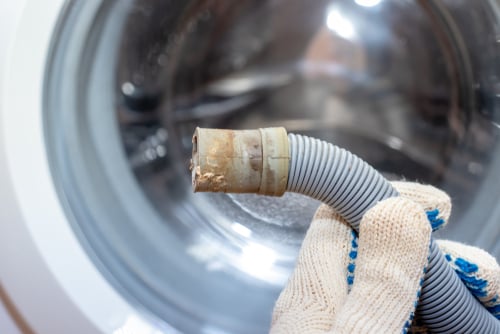You rely on your washer and dryer to keep your clothes looking good. Use this guide to make sure you're keeping up with the overall maintenance of your washer and dryer.
You depend on your washer and dryer to keep your family’s clothes looking good. If you don’t maintain these appliances properly, they could malfunction, and you could find yourself shelling out cash for a costly repair.
But that’s not the worst thing that could happen. Faulty washing machine hoses could flood your laundry room and cause water damage to your home. A lint trap that hasn’t been cleaned could start a fire.
Taking good care of your washer and dryer could extend their life, so you can save money on repairs and put off buying new appliances as long as possible. Proper maintenance can also help keep your home safe. Know what to do before and after each use, as well as on a regular monthly or yearly basis, to keep your washer and dryer in great working condition.

Maintenance to Perform Before and After Each Use
In most cases, you can avoid washer and dryer repairs by taking good care of your machines before and after each use. Clean out your dryer’s lint trap before or after each use to ensure efficiency and prevent house fires. There is an ongoing debate about front-load vs top-load washers, we are here to help with both! If you have a front-loading washer, dry the door gaskets and the door itself after each use; if you have a top-loader, leave the lid open to help dry and air out the inside and prevent mold growth.
Prevent mold and mildew buildup in your washing machine (and on your clothes) by taking wet clothes out of the washer immediately after washing. Always use the right type of detergent for your machine – for example, if you have a high-efficiency machine, you need high-efficiency detergent. Premeasured detergent pods can damage some washers. Check your manufacturer’s specifications to find out what type of detergent you should use and what amount.
When you do laundry, be careful not to overload your washing machine. Never fill the machine more than three-quarters full. If you’re washing heavy items like blankets, towels, or blue jeans, wash them in smaller loads to ease the burden on your machine. Do the same with your dryer – keeping loads small will minimize stress on the machine.
Your washing machine should never shake, vibrate, rock, or dance across the floor while you’re doing a load of laundry. If it does, check the load and balance it if necessary. Raise or lower the legs on your machine to stabilize it, or put it on a washing machine pedestal.
Maintenance to Perform Each Month
Each month, you should clean your washer and dryer to remove mold, mildew, and lint. Clean your washer by running an empty wash cycle with a mix of two cups of hot water, one cup of vinegar, and two tablespoons of baking soda. You should be cleaning your dryer’s door lint trap every time you use it, but you need to clean the interior vent monthly by disconnecting the exhaust hose from the back of the dryer and vacuuming out any debris from the exhaust hole.
You should also check your washing machine hoses every month. Look for rust at the ends of the hoses and damage such as cracking, bulging, fraying, or leaking. Replace hoses when damaged, or every three to five years. Replace rubber hoses with braided metal ones. To make sure your dryer’s exhaust vent is working properly, go outside while your dryer is running and verify that hot air is blowing out of the exhaust vent. If it isn’t, you may need to remove a blockage in your exhaust duct.
Maintenance to Perform Yearly
Every year, you should remove, clean out, or entirely replace the exhaust duct on your dryer. A clogged exhaust duct can cause a house fire – trapped lint will catch fire easily when exposed to the heat coming out of your dryer’s exhaust. If you have a vinyl dryer exhaust duct, consider replacing it with a metal one.
Was this article helpful?


